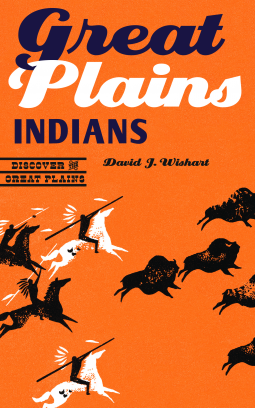
Great Plains Indians
by David J. Wishart
This title was previously available on NetGalley and is now archived.
Send NetGalley books directly to your Kindle or Kindle app
1
To read on a Kindle or Kindle app, please add kindle@netgalley.com as an approved email address to receive files in your Amazon account. Click here for step-by-step instructions.
2
Also find your Kindle email address within your Amazon account, and enter it here.
Pub Date Sep 01 2016 | Archive Date Aug 09 2016
University of Nebraska Press | Bison Books
Description
From a hunting and gathering lifestyle to first contact with Europeans to land dispossession to claims cases, and much more, Wishart takes a wide-angle look at one of the most significant groups of people in the country. Myriad internal and external forces have profoundly shaped Indian lives on the Great Plains. Those forces—the environment, religion, tradition, guns, disease, government policy—have written their way into this history. Wishart spans the vastness of Indian time on the Great Plains, bringing the reader up to date on reservation conditions and rebounding populations in a sea of rural population decline.
Great Plains Indians is a compelling introduction to Indian life on the Great Plains from thirteen thousand years ago to the present.
Marketing Plan
“David Wishart covers an astonishing range of time and territory in this brief introduction to the history of Plains Indians. Beginning with the earliest human migrations to the region, Wishart takes readers through Native cosmology and subsistence patterns, European incursions and indigenous dispossession, before arriving at the present moment, characterized by the bleak realities of reservation life mixed with the hopes represented by a resurgent population awaiting political mobilization.”—Andrew R. Graybill, author of The Red and the White: A Family Saga of the American West
“Excellent style—probably the most readable synthesis I have encountered. Masterful in its economy, without sounding trite.”—Bonnie Lynn-Sherow, author of Red Earth: Race and Agriculture in Oklahoma Territory
Available Editions
| EDITION | Paperback |
| ISBN | 9780803269620 |
| PRICE | $14.95 (USD) |
Links
Average rating from 5 members
Featured Reviews
 Reviewer 153322
Reviewer 153322
This is a solid short introduction to Native peoples of the Great Plains, drawing on recent archaeology revising our understanding of Clovis culture, as well as taking seriously oral traditions, winter counts and religious mythology to construct a richly sourced timeline of pre and post contact societies, with a highlight being the application of epidemiology to the 1837 smallpox pandemic. Wishart continues to the present, with a clear explanation of the brutal process of allotments, termination, and the financial settlements and reconstitutions of the 20th century.
 Killian P, Reviewer
Killian P, Reviewer
Indian culture and history is not something I know much about. The idiom that the victors are the ones who write history is true enough, and I don't recall being taught much about the topic in school. Marginalization is real, ya'll, even in the South where you can't throw a rock without hitting someone who claims some kind of Indian heritage several generations back.
This book is relatively short, but to me, a layman, it seemed like a good overview of the Indians of the Great Plains from ancient times to modern day. Because it was so short I did feel like certain sections could have used more fleshing out, but the writing moved at a quick and interesting pace. Most of the time is spent on the 1800's when the majority of the damage to their way of life was perpetrated, and not a lot of time is spent on their ways before colonization or in the modern day.
I've been trying to pick up and find more books on Indian history because I feel like it's a void in our countries history that no one ever wants to talk about. It's pretty unreal to think about how badly they have been treated by the people who came to take over their land. And the most recompense they've received is from the Indian Claims Commission which was a pittance compared to all the hardships that have been visited upon them. This was definitely worth the read if you're interested in this time period, and some of the stories that aren't told very often.
 Brooke W, Reviewer
Brooke W, Reviewer
Concise history of the various tribes of the Great Plains, from "prehistory" to the challenges faced by those living on reservations today. I found the sections about smallpox fascinating. The author does take the stand that what happened to Native Americans after European contact was cultural, rather than physical, genocide, which some readers may or may not agree with (although he does acknowledge that retrospective use of fairly recent terminology like "genocide" and "ethnic cleansing" is always tricky). A lot of the narrative is presented through (or in conjunction with) the "white man's" lens, probably due to the reliance of academic history on written citations, but native oral and graphic traditions are recognized.



